Complete Solutions to Problems of chapter LAWS OF MOTION : FRICTION of Class 11 book with complete answers and questions
| Class 11 | PHYSICS |
| Chapter | LAWS OF MOTION : FRICTION |
| SL ARORA | Problems |
| Number Of Questions | 17 |
| Academic Year | 2023-24 |
A block of metal weighing `2kg` is resting on a frictionless plane . It is struck by a jet of releasing water at the rate of `1 kg s^(-1)` and at a speed of `5ms^(-1)` Calculate the intial acceleration of the blocks .
View SolutionA satellite in a force - free space sweeps stationary interplanetary dust at a rate `dM//dt = alpha v`, where `M` is the mass , `v`is the velocity of the satellite and `alpha` is a constant. What is the deacceleration of the satellite ?
View SolutionTwo bodies A and B each of mass m are fixed together by a massless spring . A force F acts on the mass B as shown in fig .3 (a)18. At the instant shown , the body A has an acceleration a What is the acceleration of B ?

View SolutionAn elevator and its load wiegh a total of 1600 lb. Find the tension T in the supporting cable when the elevator, originally moving downwards at 20 ft/s is brought to rest with constant acceleration in a distance of 50 ft.
View SolutionTwo blocks of mass 2.9 kg and 1.9 kg are suspended from a rigid support S by two inextensible wires each of length 1 meter, see fig. The upper wire has negligible mass and the lower wire has a uniform mass of `0.2kg//m`. The whole system of blocks wires and support have an upward acceleration of `0.2m//s^2`. Acceleration due to gravity is `9.8m//s^2`.
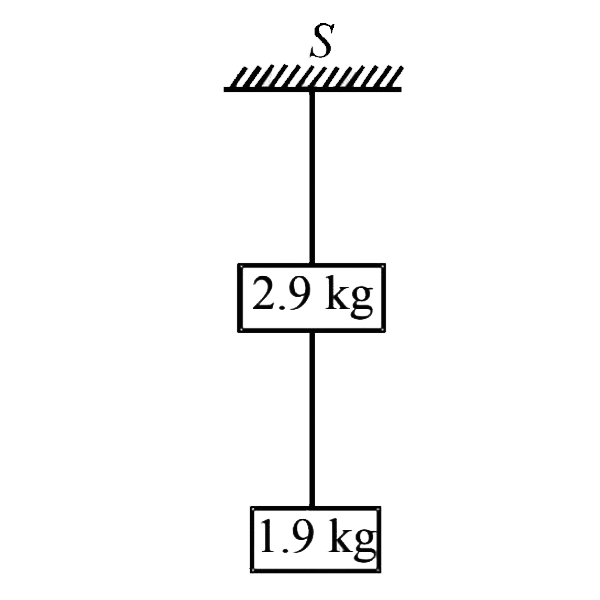
(i) Find the tension at the mid-point of the lower wire.
(ii) Find the tension at the mid-point of the upper wire.
View SolutionA uniform rope of mass `m` per unit length, hangs vertically from a support so that the lower end just touches the table top shown in figure. If it is released, show that at the time a length `y` of the rope has fallen, the force on the table is equivalent to the weight of the length `3y` of the rope.
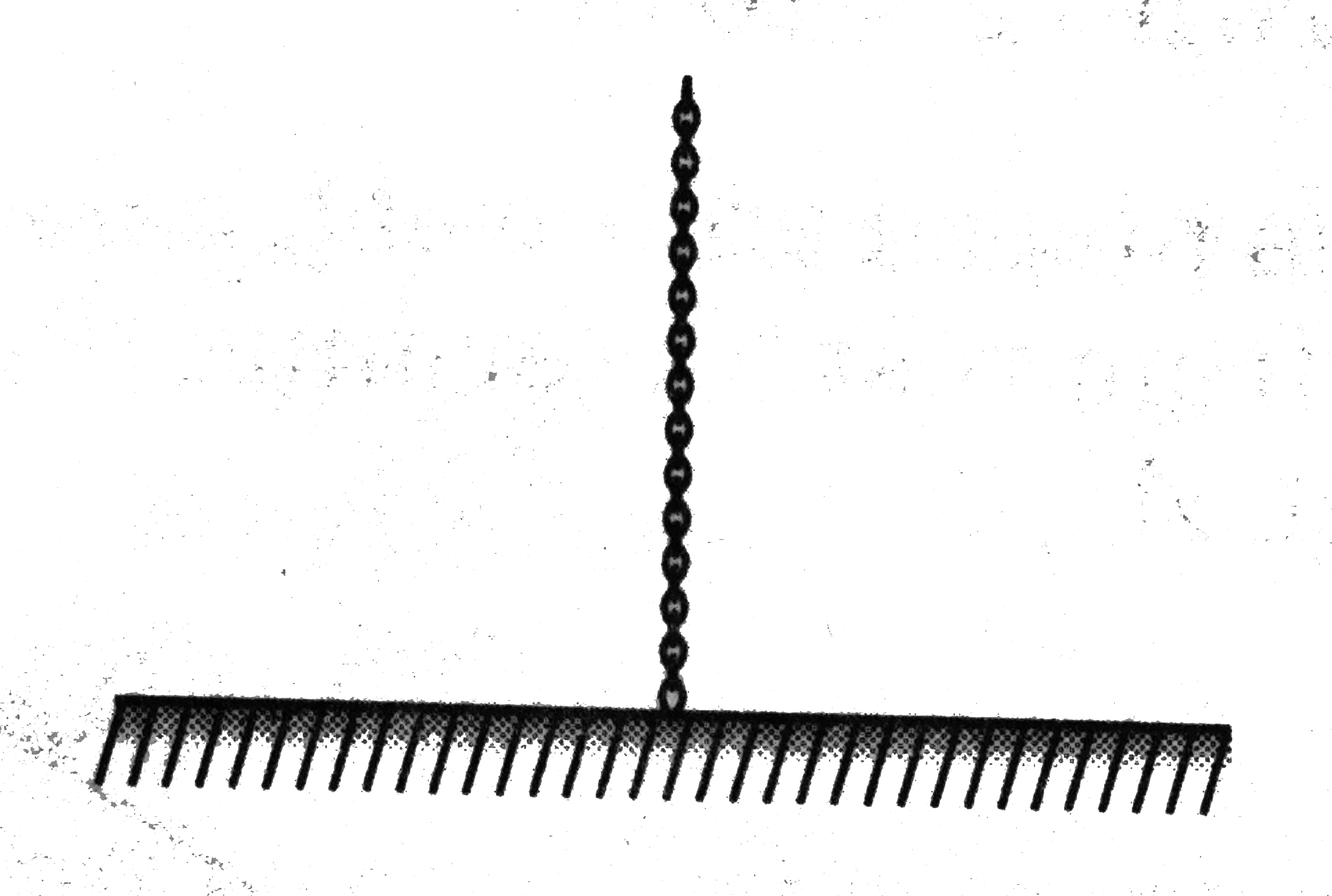
View SolutionA dise of mass 10 g is kept floating horizontally by throwing 10 marbles per secound against it from below . If mass of each marble is 5 g Calculate the velocity with which marbles are striking the disc . Assume that marbles strike the disc . Normally and rebound downwards with the same speed.
View SolutionWhat is the tension in a rod of length length L and mass M at a distance y from`F_(1)` when the rod is acted on by two unequal force `F_(1)` and `F_(2) ( lt F_(1))` as shown in.

View SolutionAn explosion blows a rock into three pieces Two pieces whose masses are 200 kg and 100 kg go off at `90^(@)` to eachother with a velocity of `8 m//s ` and ` 12 m//s ` respectively If the third piece flies off with a velocity of` 25 m//s` then calculate the mass of this piece and indicate the direction of flight of this piece in a diagram.
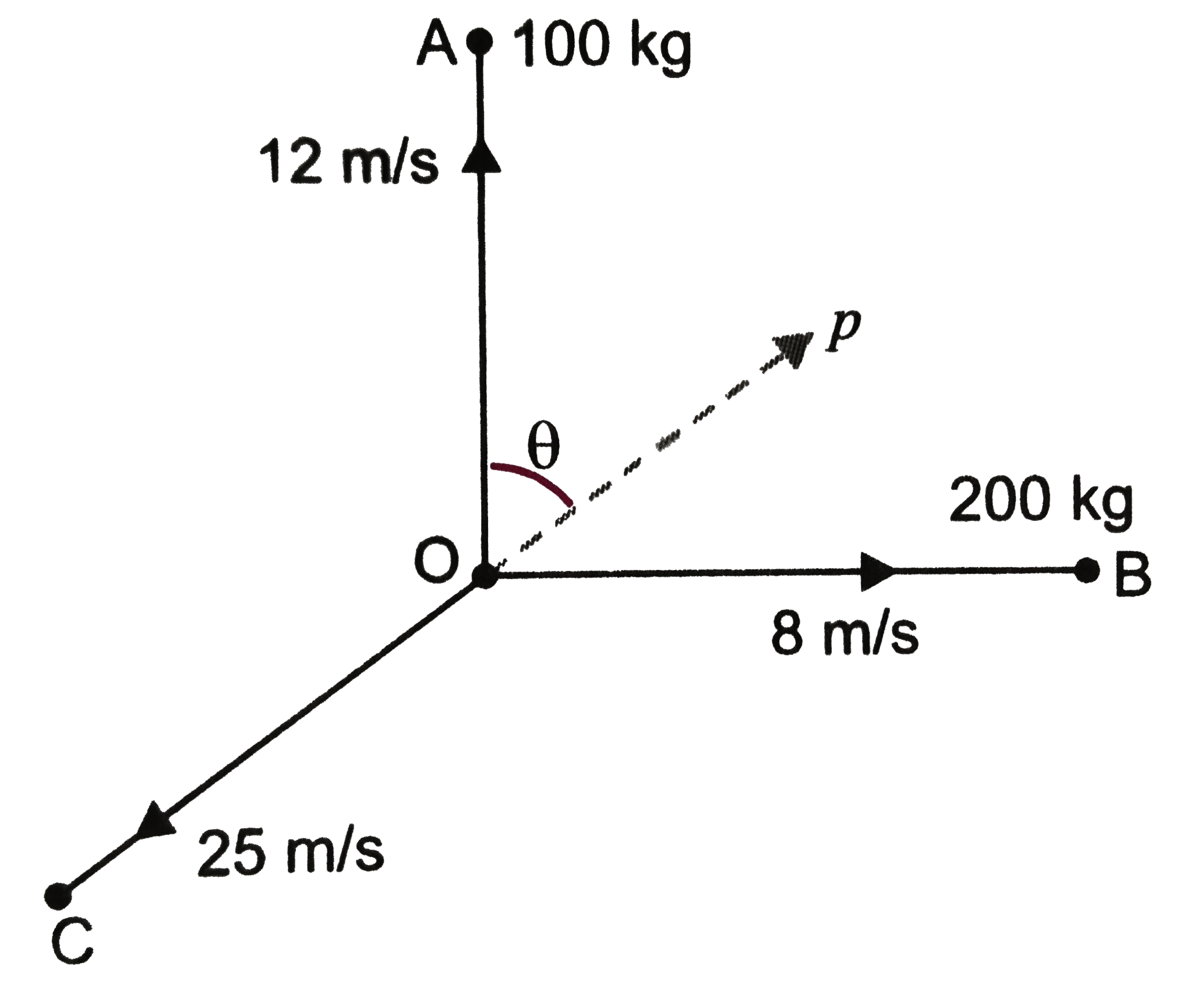
View SolutionA `20 g` bullet pierces through a plate of mass `M_(1) = 1 kg` and then comes to rest inside a second plate of mass `M_(2) = 2.98 kg` as shown in Fig. It is found that the two plates, initially at rest, now move with equal velocities. Find the percentage loss in the initial velocity of the bullet when it is between `M_(1)` and `M_(2`. Neglect any loss of material of the plates due to the action of bullet.
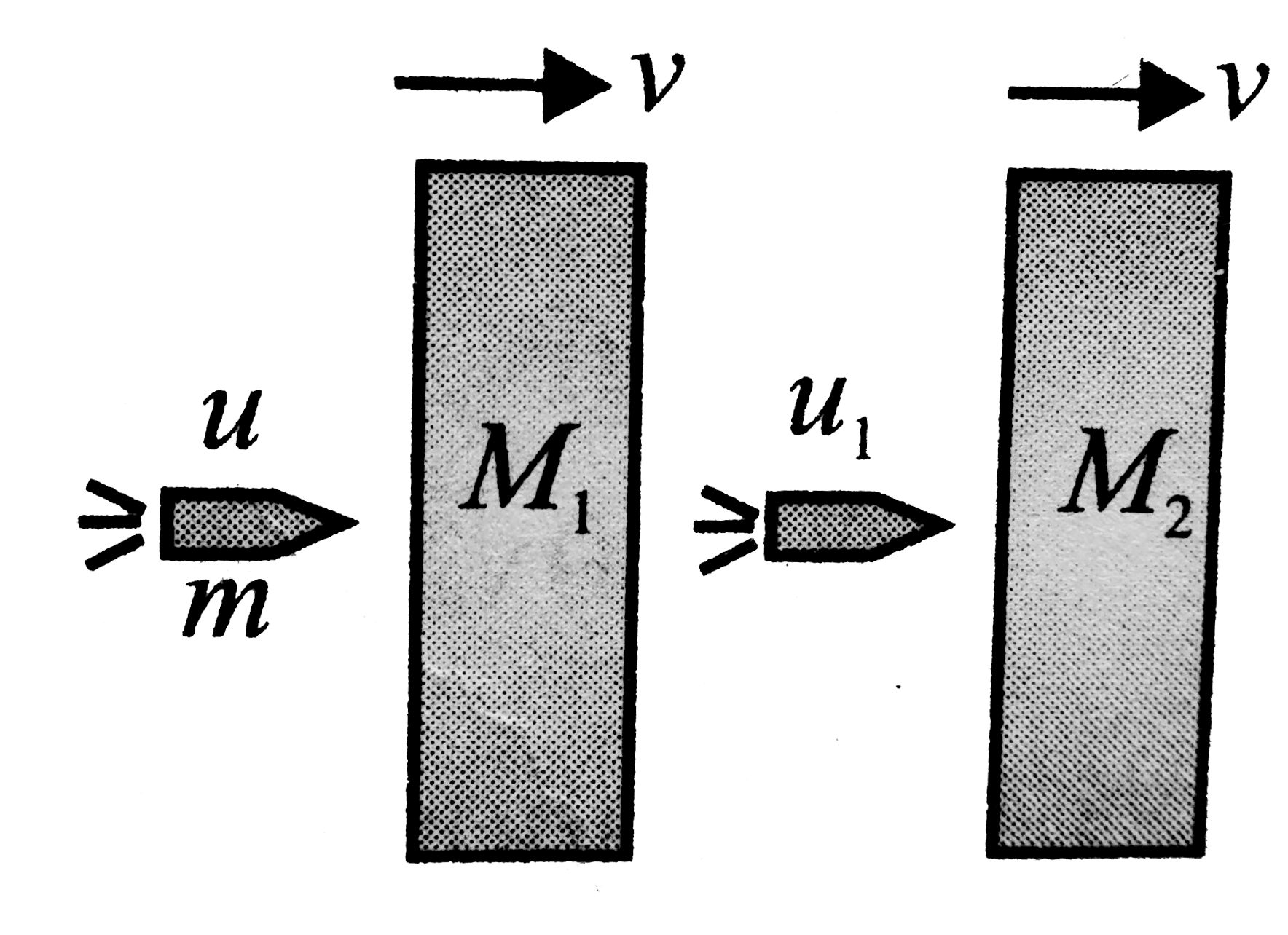
View SolutionA piece of wood of mass 0.03 kg is dropped from the top of a building 100 m high. At the same time, a bullet of mass 0.02 kg is fired vertically upward with a velocity of 100 m/s from the ground the bullet gets embedded in the wooded piece after striking. find the height to which the combination rises above the building before it starts falling take `g=10m//s^(2)`
View SolutionA block of mass 0.1 is held against a wall applying a horizontal force of 5N on block. If the coefficient of friction between the block and the wall is 0.5, the magnitude of the frictional force acting on the block is:
View SolutionA body of mass 2 kg is being dragged with uniform velocity of 2 m / s on a rough horizontal plane. The coefficient of friction between the body and the surface is 0.20. The amount of heat generated in 5 sec is
. `(4.2"joule"//cal and g=9.8 m//s^(2))`

View SolutionAn aeroplane requires for take off a speed of `80 km//h` the run on the ground being 100 m The mass of aeroplane is `10^(4)` kg and coefficient of friction between aeroplane and ground is 0.2 What is the maximum force required by the engine of the plane for take off ?
View SolutionAparticle of mass 1 g executes an oscillatory motion on the concave surface of a spherical dish of radius 2m placed on a horizontal plane, Figure . If the motion of the particle begins from a point on the dis at a height of 1 cm. from the horizontal plane and coefficient of friction is 0.01 , fing the total distance covered by the particle before coming to rest.
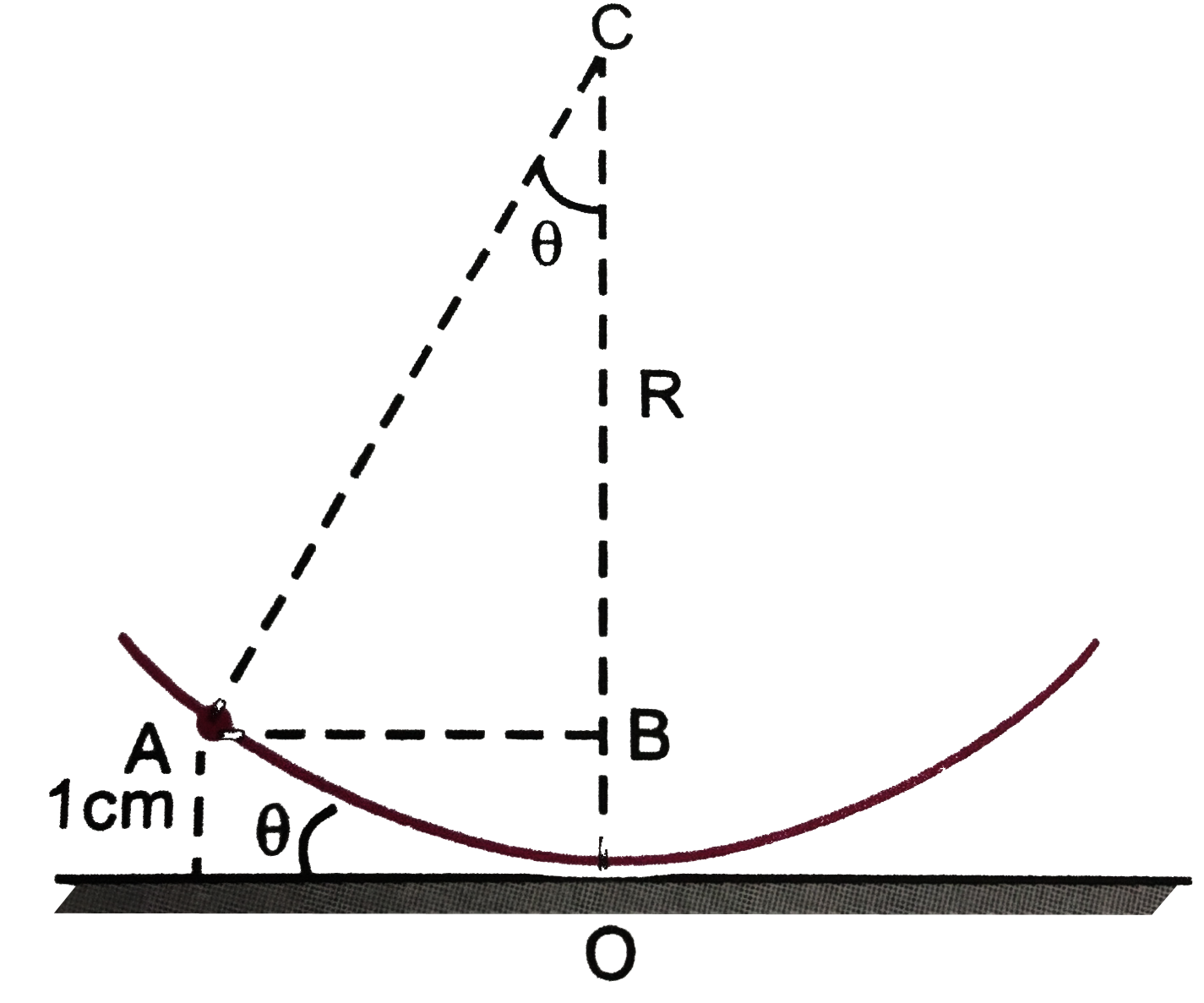
View SolutionA 100 metric ton engine is moving up a slope of gradient `5^(@)` at a speed of 100 metre`//` hour. The coefficient of friction between the engine and the rails is 0.1. If engine has an efficiency of `4%` for converting heat into work, find the amount of coal the engine has to burn in one hour. Burning of 1 kg coal yields 50000J.
View SolutionA particle of mass m rests on a horizontal floor with which it has a coefficient of static friction `mu`. It is desired to make the body move by applying the minimum possible force F. Find the magnitude of F and the direction in which it has to be applied.
View Solution
Problems questions and complete solutions for chapter LAWS OF MOTION : FRICTION of DHANPAT RAI & CO PHYSICS (HINGLISH) of Class 11